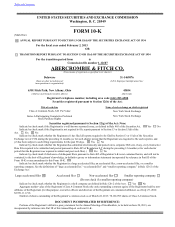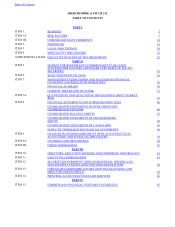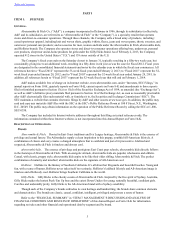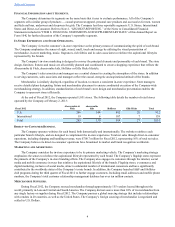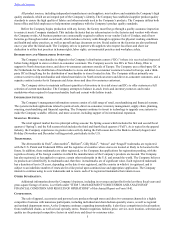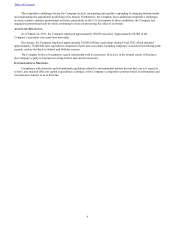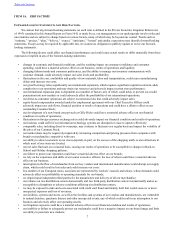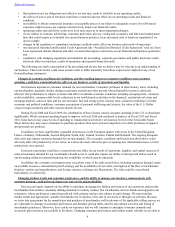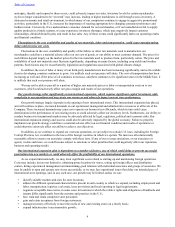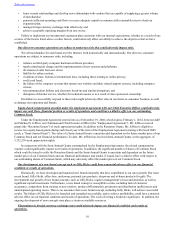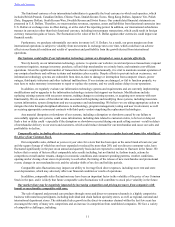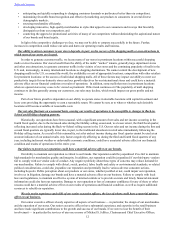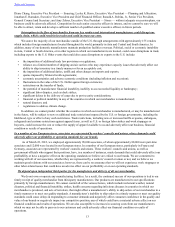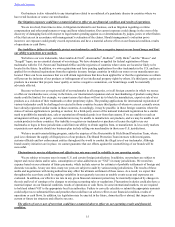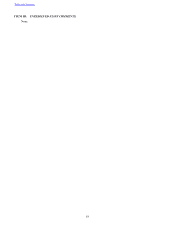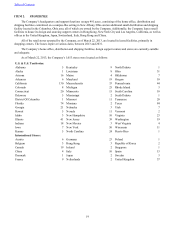Abercrombie & Fitch 2013 Annual Report Download - page 9
Download and view the complete annual report
Please find page 9 of the 2013 Abercrombie & Fitch annual report below. You can navigate through the pages in the report by either clicking on the pages listed below, or by using the keyword search tool below to find specific information within the annual report.
9
anticipate, identify and respond to them or not, could adversely impact our sales. Inventory levels for certain merchandise
styles no longer considered to be “on trend” may increase, leading to higher markdowns to sell through excess inventory. A
distressed economic and retail environment, in which many of our competitors continue to engage in aggressive promotional
activities, particularly in the U.S., increases the importance of reacting appropriately to changing consumer preferences and
fashion trends. Conversely, if we underestimate consumer demand for our merchandise, or if our manufacturers fail to supply
quality products in a timely manner, we may experience inventory shortages, which may negatively impact customer
relationships, diminish brand loyalty and result in lost sales. Any of these events could significantly harm our operating results
and financial condition.
Fluctuations in the cost, availability and quality of raw materials, labor and transportation, could cause manufacturing
delays and increase our costs.
Fluctuations in the cost, availability and quality of the fabrics or other raw materials used to manufacture our
merchandise could have a material adverse effect on our cost of goods, or our ability to meet customer demand. The prices for
such fabrics depend largely on the market prices for the raw materials used to produce them, particularly cotton. The price and
availability of such raw materials may fluctuate significantly, depending on many factors, including crop yields and weather
patterns. Such factors may be exacerbated by legislation and regulations associated with global climate change.
In addition, the cost of labor at many of our third-party manufacturers has been increasing significantly, and as the middle
class in developing countries continues to grow, it is unlikely such cost pressure will abate. The cost of transportation has been
increasing as well and, if the price of oil continues to increase, and there continues to be significant unrest in the Middle East, it
is unlikely that such cost pressure will abate.
We may not be able to pass all or a portion of higher raw materials prices or labor or transportation costs on to our
customers, which could adversely affect our gross margin and results of our operations.
Our growth strategy relies significantly on international expansion, which requires significant capital investment, adds
complexity to our operations and may strain our resources and adversely impact current store performance.
Our growth strategy largely depends on the opening of new international stores. This international expansion has placed,
and will continue to place, increased demands on our operational, managerial and administrative resources at all levels of the
Company. These increased demands may cause us to operate our business less efficiently, which in turn could cause
deterioration in the performance of our existing stores or could adversely affect our inventory levels. Furthermore, our ability to
conduct business in international markets may be adversely affected by legal, regulatory, political and economic risks. Our
international expansion strategy and success could also be adversely impacted by the global economy. Failure to properly
implement our growth strategy could have a material adverse effect on our financial condition and results of operations or
could otherwise adversely affect our ability to achieve our objectives.
In addition, as we continue to expand our overseas operations, we are subject to certain U.S. laws, including the Foreign
Corrupt Practices Act, in addition to the laws of the foreign countries in which we operate. We must use all commercially
reasonable efforts to ensure our associates comply with these laws. If any of our overseas operations, or our associates or
agents, violate such laws, we could become subject to sanctions or other penalties that could negatively affect our reputation,
business and operating results.
Our international expansion plan is dependent on a number of factors, any of which could delay or prevent successful
penetration into new markets or could adversely affect the profitability of our international operations.
As we expand internationally, we may incur significant costs related to starting up and maintaining foreign operations.
Costs may include, but are not limited to, obtaining prime locations for stores, setting up foreign offices and distribution
centers, hiring experienced management and maintaining good relations with individual associates and groups of associates. We
may be unable to open and operate new stores successfully, or we may face operational issues that delay our intended pace of
international store openings, and, in any such case, our growth may be limited, unless we can:
• identify suitable markets and sites for store locations;
• address the different operational characteristics present in each country to which we expand, including employment and
labor, transportation, logistics, real estate, lease provisions and local reporting or legal requirements;
• negotiate acceptable lease terms, in some cases in locations in which the relative rights and obligations of landlords and
tenants differ significantly from the customs and practices in the U.S.;
• hire, train and retain competent store personnel;
• gain and retain acceptance from foreign customers;
• manage inventory effectively to meet the needs of new and existing stores on a timely basis;
• expand infrastructure to accommodate growth;
Table of Contents

